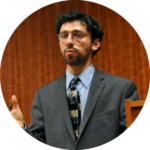Preussisch-Holland

First Jewish presence: 1812; peak Jewish population: approximately 180 in 1870-1880; Jewish population in 1933: 60
Jews settled in Preussisch-Holland (Polish: Paslek) after the passing of the Jewish emancipation laws of October 11, 1812. The community established a cemetery on Krossener Chaussee in 1817; a Jewish school in 1859 (26 students that same year); and a synagogue on Steinstrasse in 1860. The cemetery was vandalized in 1930. In 1931, Nazis beat a local Jew so severely that he later died of his injuries. Leo Aris and Jakob Rosenberg were the community leaders in 1932; Georg Salinger was president of the representation committee. That year, four Jewish children studied religion in Preussisch-Holland. The Jewish community was dissolved in 1938, at which point only 15 Jews lived in Preussisch-Holland. The synagogue, however, was nevertheless set on fire on Pogrom Night. In May 1939, eight Jews lived in the town; one local Jew, most likely married to a Christian, lived there until October 1942. Preussisch-Holland was the birthplace of Lotte Laserstein, the famous Jewish painter (1898-1993) who was forced to immigrate to Sweden in 1937.Esther Sarah Evans
Copyright: Pogrom Night 1938 - A Memorial to the Destroyed Synagogues of Germany/ germansynagogues.bh.org.il
Notes
Sources: The Encyclopedia of Jewish Life Before and During the Holocaust, Shmuel Spector [Ed.], [publisher] Yad Vashem and the New York University Press, 2001., Führer durch die Jüdische Gemeindeverwaltung und Wohlfahrtspflege in Deutschland 1923-1933, Andreas Nachama, Simon Hermann [Eds.], [publisher] Edition Hentrich, 1995., Lexikon der jüdischen Gemeinde in Deutschen Sprachraum, Klaus Dieter-Alicke, [publisher] Gütersloher Verlagshaus, 2008., www.ostpreussen.net
Details
| Date Added | May 20, 2020 |
|---|---|
| Category | Residential |
| Country | PL |
| State | Warmia-Masuria |
| City | Pasłęk (Preussisch-Holland) |
| Exhibits | Pogrom Night 1938 - A Memorial to the Destroyed Synagogues of Germany |
Have additional information, photos, connections, or other resources to contribute?
Help Us in the race against time to time document Jewish history!






